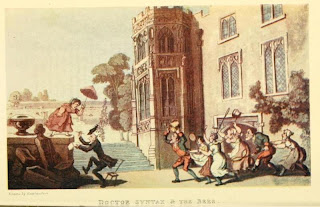 Susan reports:
Susan reports:Commenting on a recent blog, reader JennyGirl asked if the ladies on my two book covers (far right) were related. They're not, not even remotely. But for anyone glancing at a group of 17th c. ladies by Sir Peter Lely, (1618-1680) THE portraitist of his time, there is, ahem, a striking similarity.
Much of this is because the ladies wanted to be shown in the fashionable "look" of the time (think of the interchangeable blond starlets of today), and Sir Peter happily obliged. He wasn't wildly successful for nothing. But Sir Peter could certainly paint more than one kind of face, and his two portraits of Elizabeth Maitland, Duchess of Lauderdale (1626-1698) prove it.
In an era of indolent brunette beauties, Elizabeth was unique. She was well-educated, assertive, outspoken, and ambitious, and a countess in her own right. You didn't mess with Bess. During her long life, she studied philosophy, married twice and bore eleven children, served as a Royalist spy during the Civil War, acted as a fierce behind-the-scenes politician on behalf of her husbands, and conducted a love affair considered especially shocking because she was in her forties! Here's an overview of her story.

Elizabeth wasn't conventionally beautiful by the languid standards of the day. Her first portrait by Sir Peter, painted when she was about 22 in 1648 (above left), shows her famously auburn hair (faulted for being "deep coullerd") and sandy brows and lashes. Unconventional or not, she was widely regarded as a great beauty, and praised as well for her wit.
When Sir Peter painted her the last time (above right), between 1675-80, she was in her fifties – absolutely ancient in the 17th c. – yet still confident enough in her appearance not to have herself idealized, but painted as she was.
Some historians simply can't accept this, however, and interpret this portrait as a memento mori, one of those cheerless warnings of mortality and impending death. I don't agree. To me the duchess seems quite content in her own skin and that swath of scarlet silk. She's proud of whom she has become, not who she wishes she still were.
Above: Elizabeth Murray, Countess of Dysart, by Sir Peter Lely, c. 1648, Victoria & Albert Museum (Ham House)
Below: Lady Elizabeth Maitland, Countess of Dysart, Duchess of Lauderdale, by Sir Peter Lely, c. 1680, Victoria & Albert Museum (Ham House)













































